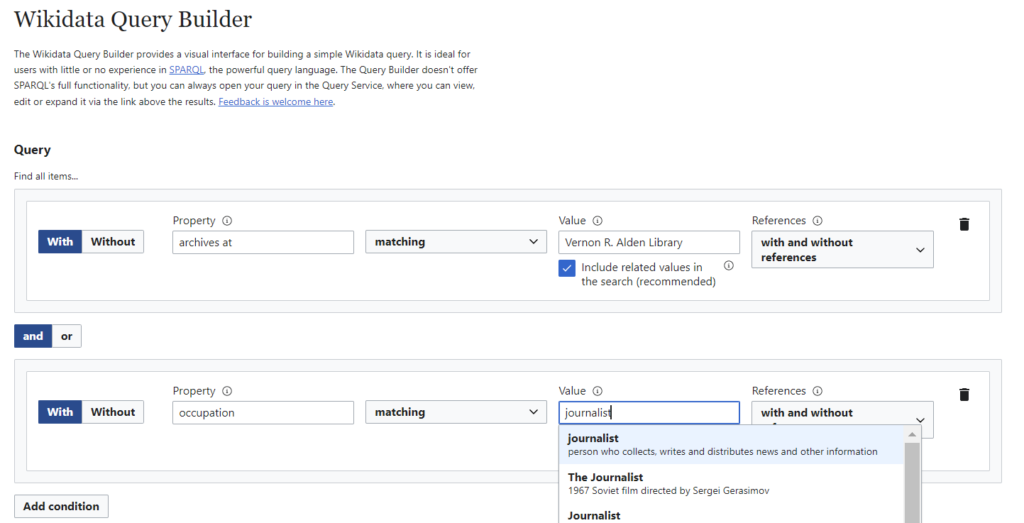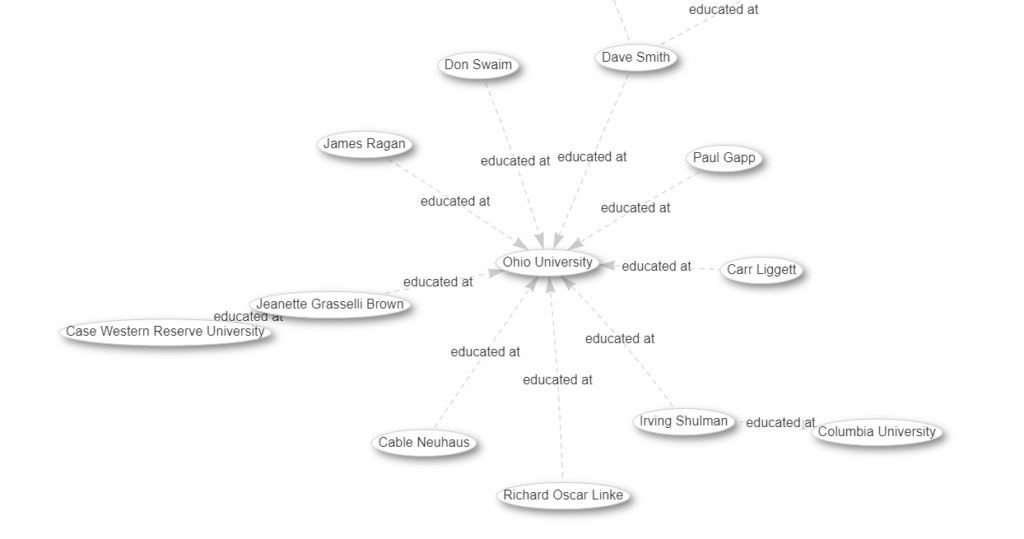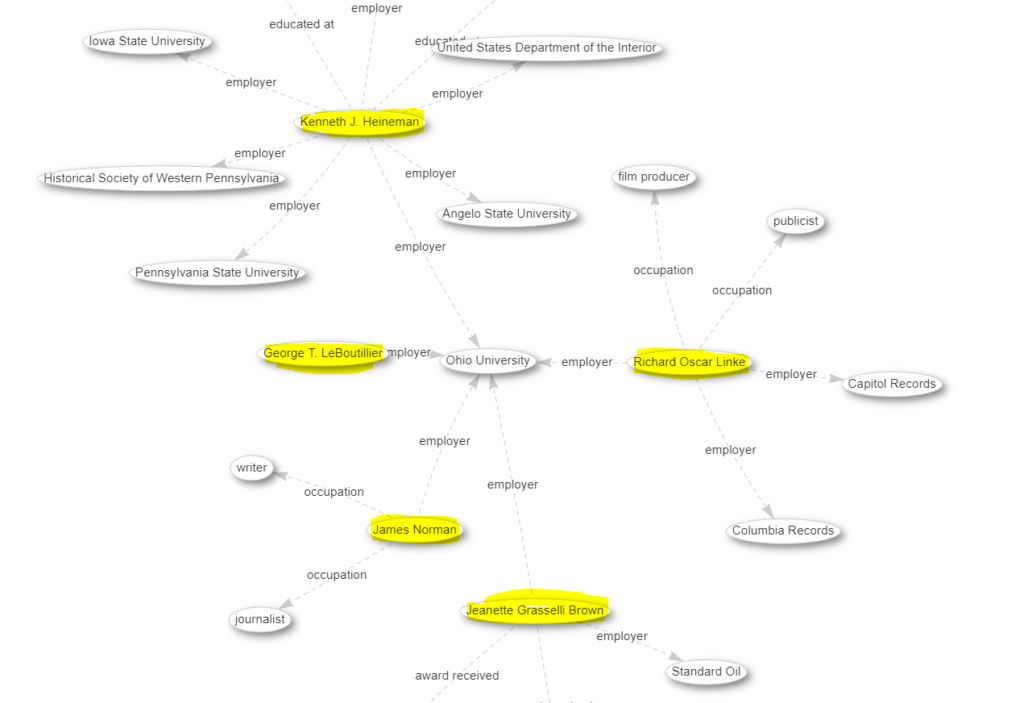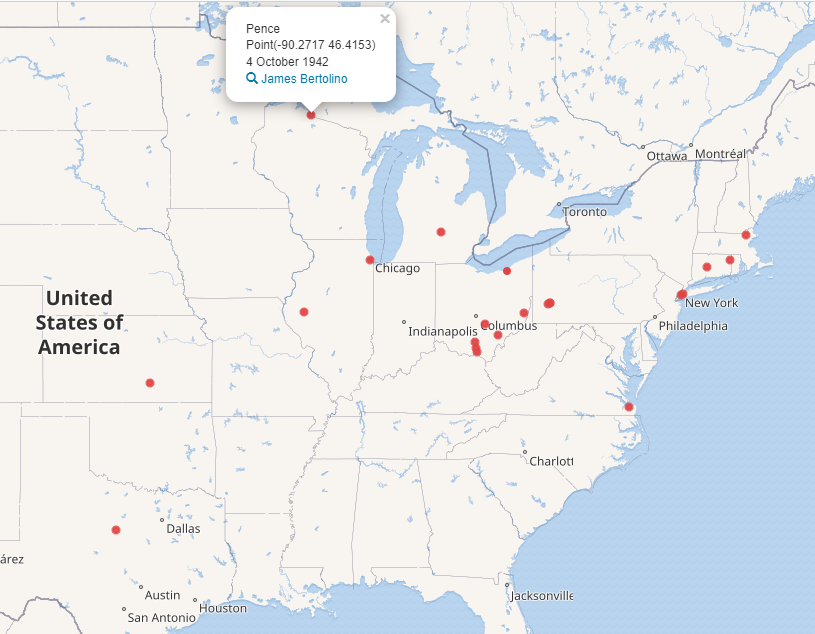By Greta Suiter, Manuscripts Archivist, Ohio University Libraries. This post is the second of three posts about adding collection information to Wikidata. Read the first post here.
Wikidata is the largest repository of linked data in the world. Individual records in Wikidata are called items and each item has its own unique identifier. For example, when I search for “Eevee” in Wikidata, results range from the cute Pokémon Eevee (Q1263559) to a music group named Eevee (Q5347176) to a software engine called Eevee (Q104137114) to a scientific article titled “EEVEE: the Empathy-Enhancing Virtual Evolving Environment” (Q30626102). This example shows us that many different types of things are represented in Wikidata. And in addition to all these types of things there are also people – or “instances of humans” – such as Susana Eevee (Q55687129). When it comes to archival collections, there is a lot of importance associated with who collected or created the collection. Archivists often name collections after creators and will devote much time and energy to learning about the creators and describing them in agent records and writing biographical notes about them.
When it comes to linking archival collections to people in Wikidata, there are a couple of ways to do it. If the collection creator is relatively famous it is easy to add a statement to the item saying “archives at” a specific repository. For instance, Cornelius Ryan, author and World War II journalist, has a Wikidata item (Q463975). One can add a new “archives at” statement and indicate that the collection is at Ohio University Libraries (also a Wikidata item Q58243476) and include a link to the collection description.

Another way is by editing items that exist based on finding aid information, but not adding “archives at” to the item. In many cases at the Mahn Center there are small collections of only one or a few items. It would be misleading to say that the archives of the creator is at the Mahn Center. In this case adding to the creator’s item is a way to engage with and enhance adjacent collections information that may be beneficial to the Mahn Center in providing more context to the collection.
In addition to editing items that already exist, one can add new creator items to Wikidata. After a creator item is in Wikidata, we can link to the creators from the collection items. Finally, we can make new Wikidata items for creators that we will add “archives at” properties to. These can be done with a minimal number of properties and can be done on an as needed basis.
Example: George T. LeBoutillier – created with the following 8 properties:
- Instance of = human
- Sex or gender = male
- Date of birth = 18 September 1908
- Place of birth = Andover, MA
- Employer = Ohio University
- Archives at = Vernon R. Alden Library
- VIAF ID = 1464160667880003560006
- Library of Congress authority ID = n83311151
With the “archives at” property added to items, we can query Wikidata in a variety of ways.
An easy way to search Wikidata is to use the Wikidata Query Builder. With this tool you do not need to know the P or Q numbers for properties and items to build queries. Instead, you can just write in the words you want to search. In the below example we are looking for items that have archives at Vernon R. Alden Library and have an occupation of journalist.

The following are links and images from query examples:
- Wikidata items with archives at Alden Library – https://w.wiki/4pZa
- People who were educated at OU and have archives at OU – https://w.wiki/59vi

- People who worked for OU and have archives at OU – https://w.wiki/59uJ

- Using birthplace data to create a map to see where collection creators were born.
- Looking for instances of humans with birth date and birth location information who have archives at Alden Library – https://w.wiki/59u2

As more information about collection creators is entered into Wikidata the larger graphs, maps, and visualizations we can create using the SPARQL query service. The next post in this series will look at adding archival collection information to Wikidata and the types of queries one can use to explore collection management questions.